
The Red River, or sometimes the Red River of the South, is a major tributary of the Mississippi and Atchafalaya Rivers in the southern
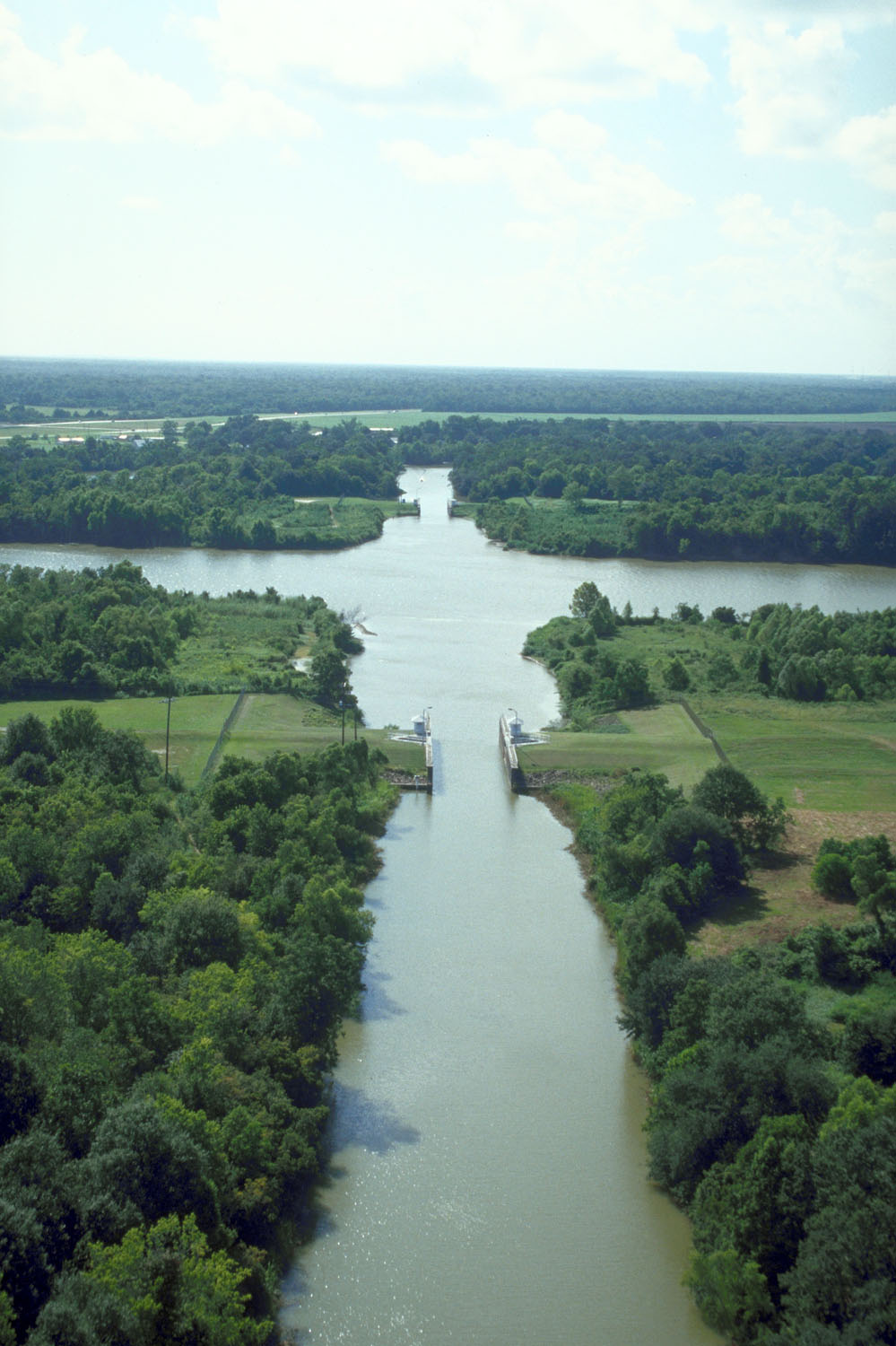 e river gains its name from the red-bed country of its watershed. It is one of several rivers with that name.
e river gains its name from the red-bed country of its watershed. It is one of several rivers with that name. "The Mexicans and Indians on the borders of Mexico are in the habit of calling any river, the waters
"The Mexicans and Indians on the borders of Mexico are in the habit of calling any river, the waters
of which have a red appearance, 'Rio Colorado', or Red river", observed R.B. Marcy in 1853. The Red River is
 the second largest river basin in the southern Great Plains.
the second largest river basin in the southern Great Plains. It rises in two branches (forks) in the Texas Panhandle and flows east, where it acts as the border between
It rises in two branches (forks) in the Texas Panhandle and flows east, where it acts as the border between  the states of Texas and Oklahoma.
the states of Texas and Oklahoma. It is a short border between Texas and Arkansas before entering Arkansas, turning south near Fulton,
It is a short border between Texas and Arkansas before entering Arkansas, turning south near Fulton, 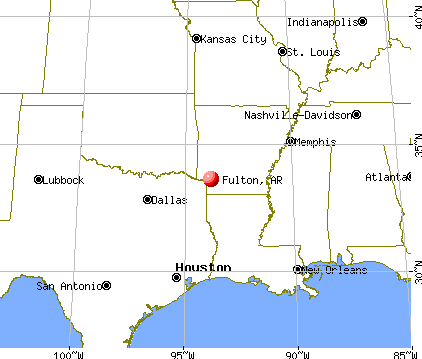 Arkansas and flowing into Louisiana.
Arkansas and flowing into Louisiana. _02.jpg) The total length of the river is 1,360 miles (2,190 km), with a mean flow of over 57,000 cubic feet per second (1,600 m3/s) at the mouth.
The total length of the river is 1,360 miles (2,190 km), with a mean flow of over 57,000 cubic feet per second (1,600 m3/s) at the mouth.
The Red River formed part of the US-Mexico border from the Adams-Onís Treaty (in force 1821) until the Texas Annexation or Treaty of Guadelupe Hidalgo.above fulton courthouseThe first battle of the Red
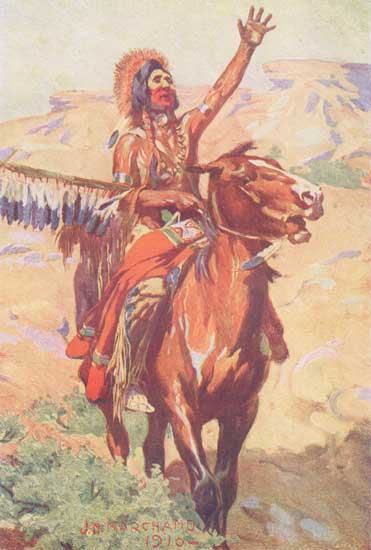 River War came on August 30, 1874, when troops of the Sixth Cavalry and Fifth Infantry under the command of Colonel Nelson A. Miles caught up with a large group of Southern Cheyenne
River War came on August 30, 1874, when troops of the Sixth Cavalry and Fifth Infantry under the command of Colonel Nelson A. Miles caught up with a large group of Southern Cheyenne 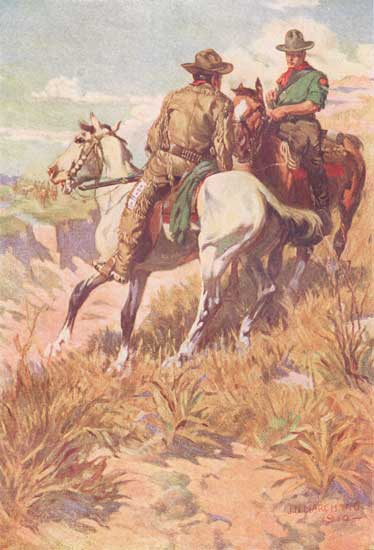 near the Prairie Dog Town Fork of the Red River in what is now southern Armstrong and northern Briscoe counties, Texas. The
near the Prairie Dog Town Fork of the Red River in what is now southern Armstrong and northern Briscoe counties, Texas. The military records describe the daylong Battle of Red River as a running battle across the rugged
military records describe the daylong Battle of Red River as a running battle across the rugged 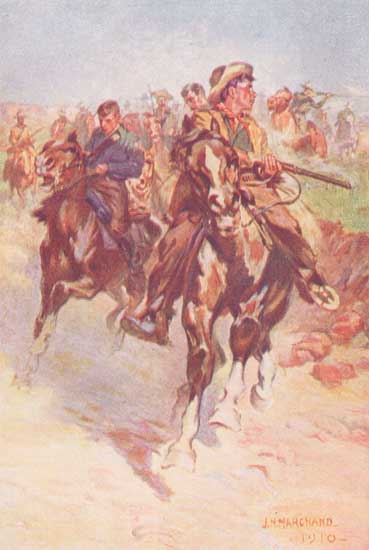 canyonlands north and south of the river. Though the Army soldiers numbered some 650 strong with two Gatling guns and a 10-
canyonlands north and south of the river. Though the Army soldiers numbered some 650 strong with two Gatling guns and a 10-![[image]](http://i53.tinypic.com/25i0inp.jpg) pounder Parrott rifle, the Indians were able to hold them off long enough for the Indian families to
pounder Parrott rifle, the Indians were able to hold them off long enough for the Indian families to ![[image]](http://i51.tinypic.com/2h879jd.jpg) safely escape up Tule Canyon and vanish across the Staked Plains.
safely escape up Tule Canyon and vanish across the Staked Plains.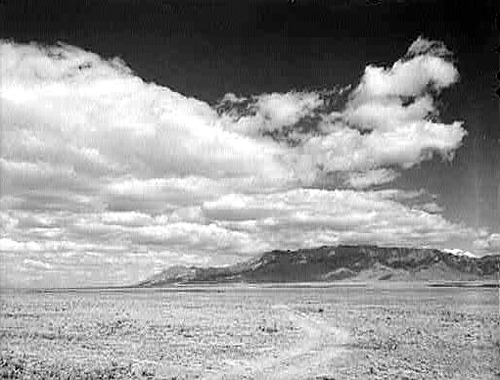
A week earlier, Major William R. Price and companies C, H, K, and L of the Eighth U.S. Cavalry had left Fort Union, New Mexico, and headed east toward the Texas Panhandle as the  westernmost column in the campaign against the Southern Plains Indians.Above present day Comanches in texas.
westernmost column in the campaign against the Southern Plains Indians.Above present day Comanches in texas. The column consisted of 216 soldiers and included two mountain howitzers and a large supply train. Crossing the Texas Panhandle south of the Canadian River, the column followed the old
The column consisted of 216 soldiers and included two mountain howitzers and a large supply train. Crossing the Texas Panhandle south of the Canadian River, the column followed the old ![[image]](http://i56.tinypic.com/2cgo237.jpg) Fort Smith-Santa Fe Road. On September 4, Price divided his command, directing Captain Farnsworth to take H company, all of the wagons, and one howitzer toward
Fort Smith-Santa Fe Road. On September 4, Price divided his command, directing Captain Farnsworth to take H company, all of the wagons, and one howitzer toward  Adobe Walls to establish a supply camp near there.
Adobe Walls to establish a supply camp near there.
Major Price took C, K, and L companies and one howitzer as the main column. On September 12, as the column moved northeast between Sweetwater Creek westernmost column in the campaign against the Southern Plains Indians.Above present day Comanches in texas.
westernmost column in the campaign against the Southern Plains Indians.Above present day Comanches in texas. The column consisted of 216 soldiers and included two mountain howitzers and a large supply train. Crossing the Texas Panhandle south of the Canadian River, the column followed the old
The column consisted of 216 soldiers and included two mountain howitzers and a large supply train. Crossing the Texas Panhandle south of the Canadian River, the column followed the old ![[image]](http://i56.tinypic.com/2cgo237.jpg) Fort Smith-Santa Fe Road. On September 4, Price divided his command, directing Captain Farnsworth to take H company, all of the wagons, and one howitzer toward
Fort Smith-Santa Fe Road. On September 4, Price divided his command, directing Captain Farnsworth to take H company, all of the wagons, and one howitzer toward  Adobe Walls to establish a supply camp near there.
Adobe Walls to establish a supply camp near there.
 they encountered a large band of Kiowa and Comanche Indians led by Kiowa chief Lone Wolf.
they encountered a large band of Kiowa and Comanche Indians led by Kiowa chief Lone Wolf.  The ensuing engagement, known as Price's Engagement or the Battle of Sweetwater Creek, (Gentile)
The ensuing engagement, known as Price's Engagement or the Battle of Sweetwater Creek, (Gentile) took place along a high ridge north of Sweetwater Creek in present Wheeler County, Texas.The film's well-written screenplay (by Borden Chase and Charles Schnee) was based on Chase's novel/Saturday Evening Postserialized story (in six installments from December 1946 through January 1947): The Chisholm Trail. This was one of producer/director Howard Hawks' most extravagant and ambitious films, and cost over $3 million (overbudget) at the time - an exorbitant sum, but became a top-grossing film of the year. Gary Cooper was originally chosen to portray Tom Dunson - ultimately played by John Wayne, but refused on the role because of the character's ruthlessness and contemptibility. And Cary Grant also turned down the role of gunslinger Cherry Valance, ultimately played in a reduced part by John Ireland.
took place along a high ridge north of Sweetwater Creek in present Wheeler County, Texas.The film's well-written screenplay (by Borden Chase and Charles Schnee) was based on Chase's novel/Saturday Evening Postserialized story (in six installments from December 1946 through January 1947): The Chisholm Trail. This was one of producer/director Howard Hawks' most extravagant and ambitious films, and cost over $3 million (overbudget) at the time - an exorbitant sum, but became a top-grossing film of the year. Gary Cooper was originally chosen to portray Tom Dunson - ultimately played by John Wayne, but refused on the role because of the character's ruthlessness and contemptibility. And Cary Grant also turned down the role of gunslinger Cherry Valance, ultimately played in a reduced part by John Ireland.
RED RIVER The film, shot on location in Arizona (near Elgin) and Mexico, authentically chronicles an epic, bleak and tough journey, similar to the ones in The Odyssey or in Exodus (in the Old Testament), that is fraught with external dangers, threats, tests of strength, and internal contentious tensions between its two strong-willed, conflicting leaders: a hard-nosed, bitter, ruthless and tough commanding father (John Wayne in one of his best performances and his first film, of five, for Hawks) and his men, defiantly led by his less harsh, surrogate, adopted son (Montgomery Clift,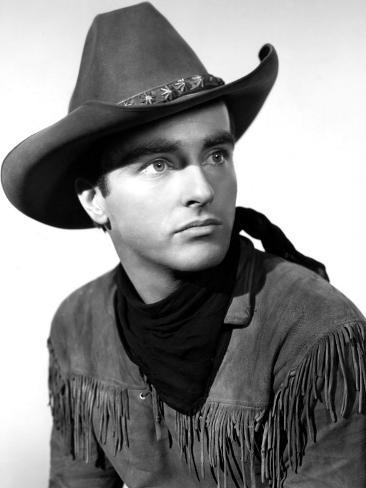 in his first film, after being noticed acting in the Broadway stage production of Lillian Hellman's The Searching Wind).
in his first film, after being noticed acting in the Broadway stage production of Lillian Hellman's The Searching Wind).
 in his first film, after being noticed acting in the Broadway stage production of Lillian Hellman's The Searching Wind).
in his first film, after being noticed acting in the Broadway stage production of Lillian Hellman's The Searching Wind).Its metaphoric title was deliberately chosen to evoke the Biblical exodus, another journey in which a group of Israelites leave their familiar homeland and cross the Red Sea into unknown territory. By film's conclusion, the cattle herd are successfully brought to market on the new Chisholm Trail, and the two men are reconciled after a brutal brawl.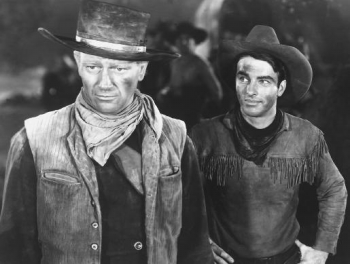 The tough woman in the film, Tess (Joanne Dru), steps in and breaks up their final fight to the death with a gun. [The film's script was more upbeat than Chase's original story. In the original novel with a darker ending, Dunson's wound - from Cherry - causes him to collapse, and he soon dies. Matt and Tess bury him in Texas beside the Red River and near his ranch.
The tough woman in the film, Tess (Joanne Dru), steps in and breaks up their final fight to the death with a gun. [The film's script was more upbeat than Chase's original story. In the original novel with a darker ending, Dunson's wound - from Cherry - causes him to collapse, and he soon dies. Matt and Tess bury him in Texas beside the Red River and near his ranch. ]
]
 The tough woman in the film, Tess (Joanne Dru), steps in and breaks up their final fight to the death with a gun. [The film's script was more upbeat than Chase's original story. In the original novel with a darker ending, Dunson's wound - from Cherry - causes him to collapse, and he soon dies. Matt and Tess bury him in Texas beside the Red River and near his ranch.
The tough woman in the film, Tess (Joanne Dru), steps in and breaks up their final fight to the death with a gun. [The film's script was more upbeat than Chase's original story. In the original novel with a darker ending, Dunson's wound - from Cherry - causes him to collapse, and he soon dies. Matt and Tess bury him in Texas beside the Red River and near his ranch.In the long run, this production brought both critical acclaim and financial success. Two Academy Award nominations were received: one for Borden Chase's story, the other for Christian Nyby's Film Editing. It was undervalued due to its being a western - John Wayne, Montgomery Clift, director Hawks, and score writer Dimitri Tiomkin should have - at least - received nominations. Wayne (and Walter Brennan as his sidekick) would go on to make another western with Hawks a decade later - Rio Bravo
No comments:
Post a Comment